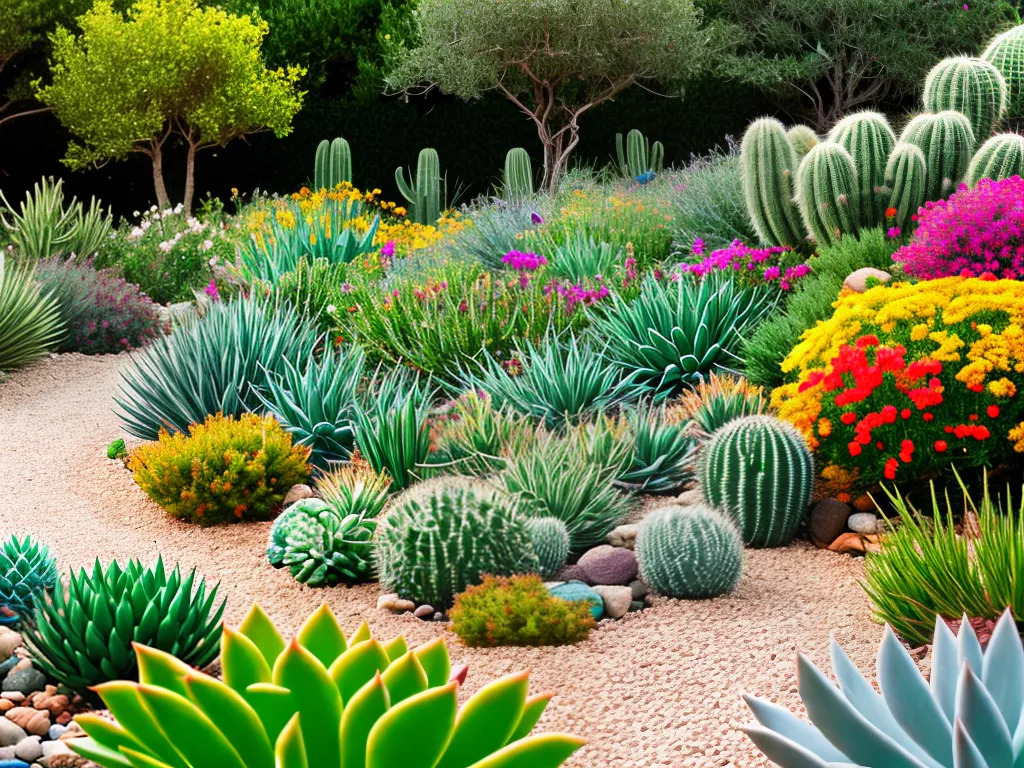Xeriscaping: A Landscaping Solution for Water Conservation

A Sustainable Landscaping Solution for Modern Times
Introduction
In an era marked by environmental consciousness and a growing need to conserve water resources, xeriscaping has emerged as a sustainable landscaping solution that not only enhances the aesthetic appeal of outdoor spaces but also contributes significantly to water conservation efforts. Let’s explore what it is,its principles, benefits and practical implementation.
What is Xeriscaping?
Xeriscaping is a landscaping approach that focuses on creating beautiful and sustainable gardens while minimizing water usage. The term “xeriscape” originates from the Greek word “xeros,” which means dry, emphasizing the reduced need for irrigation in xeriscaped gardens.
The Principles of Xeriscaping
Xeriscaping is built on several key principles that guide its implementation:
Soil Improvement
The foundation of any successful garden is healthy soil. Xeriscaping encourages the use of organic matter and soil amendments to improve water retention and nutrient availability.
Appropriate Plant Selection
Selecting plants that are well-suited to the local climate is crucial in xeriscaping. Native and drought-tolerant species thrive with minimal irrigation.
Efficient Irrigation
When irrigation is necessary, it promotes efficient watering methods such as drip irrigation and soaker hoses to minimize water wastage.
Mulching
Mulch serves as a protective layer that reduces evaporation, prevents weed growth and it additionally helps maintain soil moisture levels.
Benefits of Xeriscaping
Water Conservation
One of the most significant advantages of xeriscaping is its ability to conserve water. When you use drought-resistant plants and efficient watering techniques, xeriscaped gardens can reduce water consumption by up to 50%.
Lower Maintenance
It requires less maintenance than traditional gardens. With minimal watering and reduced lawn care, homeowners can save time and money.
Environmental Benefits
This landscaping method reduces the need for chemical pesticides and fertilizers, promoting a healthier ecosystem. It also reduces greenhouse gas emissions associated with lawn maintenance equipment.
Increased Property Value
Well-designed xeriscapes can enhance the curb appeal of a property consequently increasing its value. Potential buyers are often attracted to low-maintenance and environmentally friendly landscapes.
How to Implement Xeriscaping
Evaluate Your Landscape
Begin by assessing your current landscape, considering factors like soil type, sun exposure and existing vegetation.
Choose Native Plants
When choosing plants, select native plants that are adapted to your region’s climate and require less water.
Design Efficiently
When it comes to the design, create a xeriscape design that maximizes water conservation and minimizes maintenance needs.
Install Drip Irrigation
Consider installing a drip irrigation system to water plants efficiently.
Apply Mulch
Apply a layer of mulch to conserve moisture and to deter growth of weeds.
Conclusion
Xeriscaping offers an innovative approach to landscaping that aligns with the growing need for sustainable practices in our modern world. By following its principles and incorporating drought-tolerant plants, anyone can create a beautiful, environmentally friendly garden while significantly reducing water consumption.
FAQs
Is xeriscaping only suitable for arid regions?
No, xeriscaping principles can be applied in various climates to reduce water usage and promote sustainability.
Can I still have a lush garden with xeriscaping?
Absolutely,it allows for the creation of vibrant and visually appealing gardens using drought-resistant plants.
Is xeriscaping expensive to implement?
While there may be initial costs, the long-term savings on water and maintenance makes this method a cost-effective choice.
Can I convert my existing garden into a xeriscape?
Yes, existing gardens can be transformed into xeriscapes by gradually replacing water-intensive plants with drought-tolerant ones.